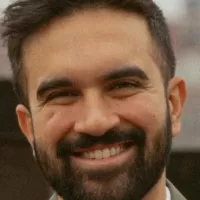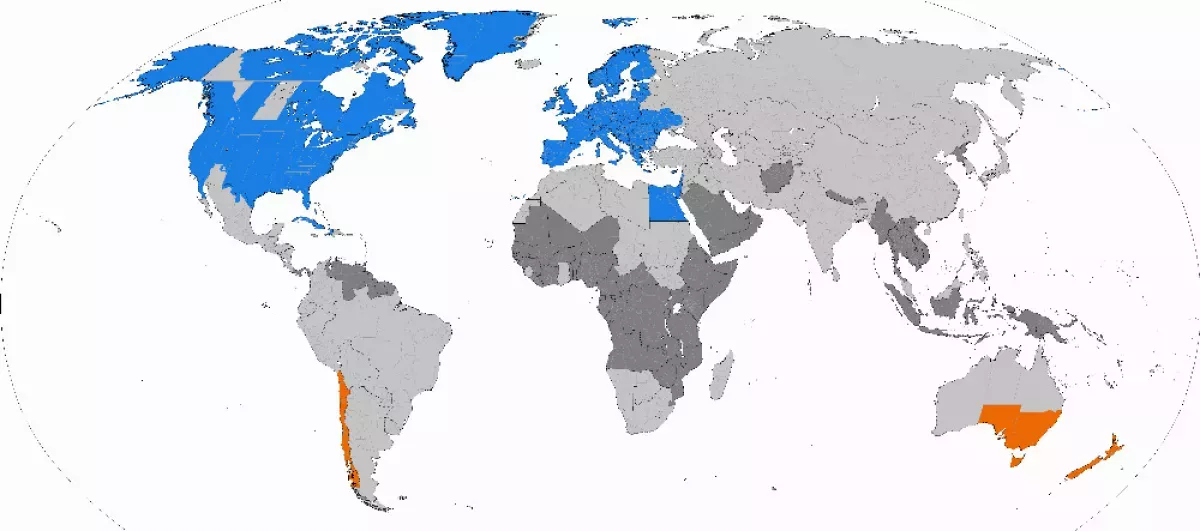Daylight saving time (DST) is the practice of advancing clocks, typically by one hour, during the spring or late winter to better utilize daylight during the summer months. This causes darkness to occur later in the evening. In the autumn, clocks are set back by one hour to return to standard time.
1907: William Willett Conceives DST
In 1907, William Willett independently conceived of Daylight Saving Time during a pre-breakfast ride, observing that many Londoners slept through a large part of the summer day.
1907: William Willett Proposes British Summer Time
In 1907, William Willett proposed British Summer Time as a means of saving energy. Although it was given serious consideration by Parliament, it was not implemented until 1916.
1907: Willett's DST Proposal
In 1907, William Willett's DST proposal attracted supporters, but the opposition was stronger.
February 1908: First Daylight Saving Bill Introduced to British House of Commons
On February 12, 1908, Liberal Party member of parliament Robert Pearce introduced the first Daylight Saving Bill to the British House of Commons, although it did not become law.
July 1908: Port Arthur Enacts DST
On July 1, 1908, Port Arthur, Ontario, Canada, became the first city in the world to enact Daylight Saving Time.
1908: First Implementation of DST in Port Arthur, Ontario
In 1908, Port Arthur, Ontario, Canada, became the first location to implement Daylight Saving Time, though only on a local level.
May 1909: DST Bill Introduced to US House of Representatives
In May 1909, Andrew Peters introduced a DST bill to the US House of Representatives, but it soon died in committee.
1911: Similar Bills Introduced to No Avail
From 1911 through 1914, Willett's allies introduced similar bills, to no avail.
1911: Orillia, Ontario Introduces DST
In 1911, Orillia, Ontario, introduced Daylight Saving Time, initiated by William Sword Frost during his tenure as mayor.
1911: Summer Time Replaces Daylight Saving Time in Draft Legislation
In Britain, by 1911, the term summer time replaced daylight saving time in draft legislation.
1912: Orillia, Ontario Continues DST
In 1912, William Sword Frost continued to implement Daylight Saving Time in Orillia, Ontario during his tenure as mayor.
1914: Similar Bills Introduced to No Avail
From 1911 through 1914, Willett's allies introduced similar bills, to no avail.
1915: Death of William Willett
William Willett, who proposed Daylight Saving Time, lobbied for the proposal in the UK until his death in 1915.
April 1916: Nation-wide Implementation by German and Austro-Hungarian Empires
In April 1916, the German and Austro-Hungarian Empires were the first to implement Daylight Saving Time nationwide.
May 1916: United Kingdom Uses DST
On May 21, 1916, the United Kingdom used DST for the first time.
1916: Implementation of British Summer Time
In 1916, British Summer Time was finally implemented in the United Kingdom, following William Willett's 1907 proposal to save energy.
1916: Germany's Adoption of DST
Since Germany's adoption of DST in 1916, the world has seen many enactments, adjustments, and repeals of DST, with similar politics involved.
1917: US Enters War and Overcomes Objections to DST
The US' entry into the war in 1917 overcame objections to DST.
1918: First Implementation of DST in the US
Daylight Saving Time was first implemented in the US in 1918 with the Standard Time Act as a wartime measure for seven months during World War I to conserve energy resources.
1918: DST Starts in US
In 1918, DST started in the United States.
1918: United States Adopts Daylight Saving
In 1918, the United States adopted daylight saving.
1919: Congress Repealed DST
After 1919, the US Congress repealed DST.
1922: District of Columbia Federal Employees to Start Work at 8 am Rather Than 9 am During the Summer
In the summer of 1922 President Warren G. Harding ordered District of Columbia federal employees to start work at 8 am rather than 9 am.
1928: Implementation of DST in New Zealand
In 1928, New Zealand implemented a form of Daylight Saving Time, following George Hudson's proposal from 1895, though not in its original proposed form.
May 1965: St. Paul and Minneapolis Kept Different Clocks
In May 1965 St. Paul and Minneapolis, Minnesota, kept different clocks for two weeks: the capital city decided to switch to daylight saving time, while Minneapolis opted to follow the later date set by state law.
1966: Standardization of DST in the US by Federal Law
In 1966, Daylight Saving Time was standardized in the US by federal law, with the passage of the Uniform Time Act.
1966: Uniform Time Act Formalizes US DST Period
The Uniform Time Act of 1966 formalized the United States' period of daylight saving time observation as lasting six months, which was previously declared locally.
1966: Uniform Time Act of 1966
The Uniform Time Act of 1966 permits states to opt out of DST and observe permanent standard time, but it does not permit permanent DST.
1966: Uniform Time Act Standardizes DST in the US
The Uniform Time Act standardized Daylight Saving Time in the US in 1966.
1966: No Standardization of Peacetime DST Until 1966
The history of time in the United States features DST during both world wars, but no standardization of peacetime DST until 1966.
1968: United Kingdom Experimented with Year-Round Summer Time
The United Kingdom and Ireland put clocks forward by an extra hour during World War II and experimented with year-round summer time between 1968 and 1971.
1971: United Kingdom Experimented with Year-Round Summer Time
The United Kingdom and Ireland put clocks forward by an extra hour during World War II and experimented with year-round summer time between 1968 and 1971.
December 1973: NORC Poll on Permanent DST
In December 1973, during the Oil Crisis, a poll by the NORC at the University of Chicago found that 79% of those interviewed favored permanent DST.
1974: Permanent DST Enacted for the Winter of 1974
Permanent Daylight Saving Time was enacted for the winter of 1974 in the US, but it was repealed a year later due to complaints about dark mornings.
1978: Daylight Savings Time Common Usage
As explained by Richard Meade in the English Journal of the (American) National Council of Teachers of English, the form daylight savings time (with an "s") was already much more common than the older form daylight saving time in American English in 1978.
1986: DST Period Extended to Seven Months in the US
In 1986, the period of Daylight Saving Time observation in the United States was extended to seven months.
1987: Extension to US DST
In the mid-1980s, Clorox and 7-Eleven provided the primary funding for the Daylight Saving Time Coalition behind the 1987 extension to US DST.
1992: Referendum on DST in Queensland, Australia
In 1992, a referendum on the introduction of daylight saving took place in Queensland, Australia, after a three-year trial of daylight saving. It was defeated with a 54.5% "no" vote, with regional and rural areas strongly opposed, and those in the metropolitan southeast in favor.
1996: Mexico Observes Summertime Daylight Saving Time
Mexico observed summertime daylight saving time starting in 1996.
1996: Standardization of European Summer Time
Since 1996, European Summer Time has been observed from the last Sunday in March to the last Sunday in October; previously the rules were not uniform across the European Union.
2000: Estimated Economic Loss on US Stock Exchanges Due to Daylight Saving Effect
It has been argued that clock shifts correlate with decreased economic efficiency and that in 2000, the daylight-saving effect implied an estimated one-day loss of $31 billion on US stock exchanges.
2003: Proposal to Observe Year-Round DST in the UK
In 2003, the United Kingdom's Royal Society for the Prevention of Accidents supported a proposal to observe year-round daylight saving time, but it has been opposed by some industries, by some postal workers and farmers, and particularly by those living in the northern regions of the UK.
2005: Lobbying for the 2007 Extension to US DST
In 2005, the Sporting Goods Manufacturers Association and the National Association of Convenience Stores successfully lobbied for the 2007 extension to US DST.
2005: DST Period Extended to Eight Months in the US
In 2005, the period of Daylight Saving Time observation in the United States was extended to eight months, partially motivated by lobbying from the candy industry to include Halloween within the DST period.
2006: Indiana Begins Participating in Daylight Saving Time
In 2006, Indiana began participating in daylight saving time.
2007: United States Extension of DST
A 2008 United States Department of Energy report found no significant increase in motor gasoline consumption due to the 2007 United States extension of DST.
2007: Computer System Upgrades Required by DST Rule Change
Changes to DST rules cause problems in existing computer installations. For example, the 2007 change to DST rules in North America required that many computer systems be upgraded, with the greatest onus on e-mail and calendar programs.
2007: 2007 Extension to US DST
In 2005, the Sporting Goods Manufacturers Association and the National Association of Convenience Stores successfully lobbied for the 2007 extension to US DST.
2007: Example TZ Value Specifies Time for the Eastern United States Starting in 2007
Older or stripped-down systems may support only the TZ values required by POSIX, which specify at most one start and end rule explicitly in the value. For example, TZ='EST5EDT,M3.2.0/02:00,M11.1.0/02:00' specifies time for the eastern United States starting in 2007.
2007: Extended DST Period in the United States and Canada
Starting in 2007, most of the United States and Canada observed DST from the second Sunday in March to the first Sunday in November, almost two-thirds of the year.
December 2008: Registration of DS4SEQ Political Party
In December 2008, the Daylight Saving for South East Queensland (DS4SEQ) political party was officially registered in Queensland. The party advocated for a dual-time-zone arrangement for daylight saving in South East Queensland, while the rest of the state maintained standard time.
2008: United States Department of Energy Report on Motor Gasoline Consumption
A 2008 United States Department of Energy report found no significant increase in motor gasoline consumption due to the 2007 United States extension of DST.
2008: Different DST Change Dates in Australian States
In 2008, most Australian states that observed Daylight Saving Time changed clocks forward on October 5, but Western Australia changed on October 26.
March 2009: DS4SEQ Contests Queensland State Election
In March 2009, the DS4SEQ political party contested the Queensland state election with 32 candidates. The party received one percent of the statewide primary vote, which equated to around 2.5% across the 32 electorates contested.
2009: Summer Time
As of 2009, summer time began annually on the last Sunday in March under a European Community directive, which may be Easter Sunday (as in 2016).
April 2010: Daylight Saving for South East Queensland Referendum Bill 2010
On April 14, 2010, Queensland Independent member Peter Wellington introduced the Daylight Saving for South East Queensland Referendum Bill 2010 into the Queensland parliament. The bill, introduced after being approached by the DS4SEQ political party, called for a referendum at the next state election on the introduction of daylight saving into South East Queensland under a dual-time-zone arrangement.
June 2011: Queensland Parliament Rejects Wellington's Bill
On June 15, 2011, the Queensland parliament rejected the Daylight Saving for South East Queensland Referendum Bill introduced by Peter Wellington.
2014: Russia Abandons Permanent DST
In 2014, Russia abandoned its plan to stay in DST permanently due to widespread complaints about dark winter-time mornings. The country changed its clocks to standard time (UTC+3:00) on October 26, 2014, intending to stay there permanently.
2014: Russia Switched Back to Standard Time
In 2014, Russia switched permanently back to standard time after switching to permanent DST from 2011 to 2014, but the move proved unpopular because of the extremely late winter sunrises.
2016: Easter Sunday
As of 2009, summer time began annually on the last Sunday in March under a European Community directive, which may be Easter Sunday (as in 2016).
2016: Troll Research Station Time Shift
Since 2016, the Troll research station shifts two hours directly between CEST and GMT.
2017: Meta-Analysis Finds Electricity Savings from DST
A 2017 meta-analysis of 44 studies found that DST leads to electricity savings of 0.3% during the days when DST applies.
2017: Study Finds Increased Deaths Due to DST Transition
A 2017 study in the American Economic Journal: Applied Economics estimated that "the transition into DST caused over 30 deaths at a social cost of $275 million annually", primarily by increasing sleep deprivation.
September 2018: European Commission Proposed End to Seasonal Clock Changes
In September 2018, the European Commission proposed to end seasonal clock changes as of 2019. Member states would have the option of observing either daylight saving time all year round or standard time all year round.
2018: Marco Rubio Fails to Extend Daylight Saving Time Permanently
Between 2018 and 2024, Florida Republican Senator Marco Rubio repeatedly filed bills to extend daylight saving time permanently into winter, without success.
2018: European Parliament Reviews Abolition of DST
In 2018, the European Parliament, reviewing a possible abolition of DST, approved a more in-depth evaluation examining the disruption of the human body's circadian rhythms which provided evidence suggesting the existence of an association between DST clock-shifts and a modest increase of occurrence of acute myocardial infarction, especially in the first week after the spring shift.
March 2019: European Parliament Approved Commission's Proposal
In March 2019, the European Parliament approved the commission's proposal, while deferring implementation from 2019 until 2021.
2019: NORC Poll on Permanent Standard Time
In 2019, a survey by the National Opinion Research Center indicated more Americans would prefer permanent Standard Time.
2019: Morocco's DST Observance Excluding Ramadan
Since 2019, Morocco observes Daylight Saving Time every month except during Ramadan. During Ramadan, Morocco's clocks observe Western European Time (UTC+00:00), and then shift forward to Western European Summer Time (UTC+01:00) at the close of Ramadan.
October 2020: Decision on Ending Seasonal Clock Changes Not Confirmed
As of October 2020, the decision to end seasonal clock changes has not been confirmed by the Council of the European Union.
2021: Surveys on DST preference in 2021
In 2021, surveys by the National Sleep Foundation and YouGov indicated that more Americans would prefer permanent DST, while a survey by the Associated Press indicated a preference for permanent Standard Time.
2021: Implementation Deferral on Ending Seasonal Clock Changes
In March 2019, the European Parliament approved the commission's proposal, while deferring implementation from 2019 until 2021.
2022: Orthodox Jewish Groups Oppose DST Extensions
In 2022, Orthodox Jewish groups have opposed extensions to DST, as well as a 2022 bipartisan bill that would make DST permanent, saying it will "interfere with the ability of members of our community to engage in congregational prayers and get to their places of work on time."
2022: Rubio's Sunshine Protection Act Passes Senate
In 2022, Rubio's "Sunshine Protection Act" passed the United States Senate without committee review by way of voice consent, with many senators afterward stating they were unaware of the vote or its topic. The bill was stopped in the US House, where questions were raised as to whether permanent DST or standard time would be more beneficial.
2022: Study on Sleep Loss Affecting Motivation to Help Others
In 2022, a publication of three replicating studies of individuals, between individuals, and transecting societies, demonstrated that sleep loss affects the human motivation to help others, which in its fMRI findings is "associated with deactivation of key nodes within the social cognition brain network that facilitates prosociality."
2022: Surveys on DST preference in 2022
In 2022, surveys reported by the National Sleep Foundation, YouGov, CBS, and Monmouth University indicated more Americans would prefer permanent DST.
2022: Mexico Ends Daylight Saving Time
In late 2022, Mexico's clocks "fell back" for the last time, marking the restoration of permanent standard time.
2023: DST Usage in 2023
As of 2023, approximately 34% of the world's countries utilize Daylight Saving Time (DST), primarily in Europe and North America. In Canada, some regions like Yukon and most of Saskatchewan maintain permanent DST, while in the United States, Hawaii and Arizona (except for the Navajo Nation) do not observe DST.
2024: Marco Rubio Fails to Extend Daylight Saving Time Permanently
Between 2018 and 2024, Florida Republican Senator Marco Rubio repeatedly filed bills to extend daylight saving time permanently into winter, without success.
2025: Polls indicate shift towards abolishing DST
As of 2025, polls indicate a slight majority in the United States favor abolishing DST, with increasing momentum to either switch permanently to standard time or make DST permanent, citing health risks, economic costs, lost sleep, and disruptions to daily routines.
2025: Stanford Study on the Year-Long Circadian Health Impact
In 2025, a Stanford study compared the year-long circadian health impact of permanent Standard Time, permanent Daylight Saving Time, and biannually switching in the continental U.S. using models of the human circadian rhythm and health data from the CDC Places dataset. Researchers found that switching to permanent Standard Time was predicted to reduce cases of obesity by 2.6 million cases and stroke by 300,000 cases. Permanent Daylight Saving Time also reduced cases but to a lesser extent.
2025: Expected Additional Energy Consumption During Daylight Saving Time
In a publication from 2025, based on the change in consumption patterns, such as air conditioning systems, additional consumption is expected to occur more frequently during daylight saving time in the future.
2025: Polling Shows Preference for Permanently Ending DST
Polling as of 2025 shows a majority of Americans polled now prefer to permanently end DST, with 54% of Americans reporting that a permanent switch to standard time would be preferable.
Mentioned in this timeline

Marco Rubio is an American politician attorney and diplomat He...
CBS Broadcasting Inc CBS is a prominent American commercial broadcast...
The Union of Soviet Socialist Republics USSR existed from to...
New Zealand is an island country located in the southwestern...
Morocco officially the Kingdom of Morocco is a North African...
Germany officially the Federal Republic of Germany is a Western...
Trending

2 months ago Mamdani Addresses Trump on Fox News, Vows Different Mayoral Approach, Apologizes to NYPD
6 months ago Oman: Cooperation talks, plastics growth, and ghost plume reshaping Earth detected.
1 month ago Avelo Adds Routes, Offers Cheap Flights: $34 to Florida, $35 from Concord.

2 months ago Widespread Flight Cancellations and Delays Ground Thousands of Passengers Across the US
7 months ago Russian Bridges Collapse: Train Derailment Claims Lives Near Ukraine, Leaving Seven Dead
5 months ago Dominican Republic's Credit Rating Upgraded by Moody's to Ba2: Economic Boost
Popular

XXXTentacion born Jahseh Dwayne Ricardo Onfroy was a controversial yet...

Stranger Things created by the Duffer Brothers is a popular...
The Kennedy Center Honors are annual awards recognizing individuals and...
Turning Point USA TPUSA is an American nonprofit organization founded...

Candace Owens is an American conservative political commentator and author...

William Franklin Graham III commonly known as Franklin Graham is...
